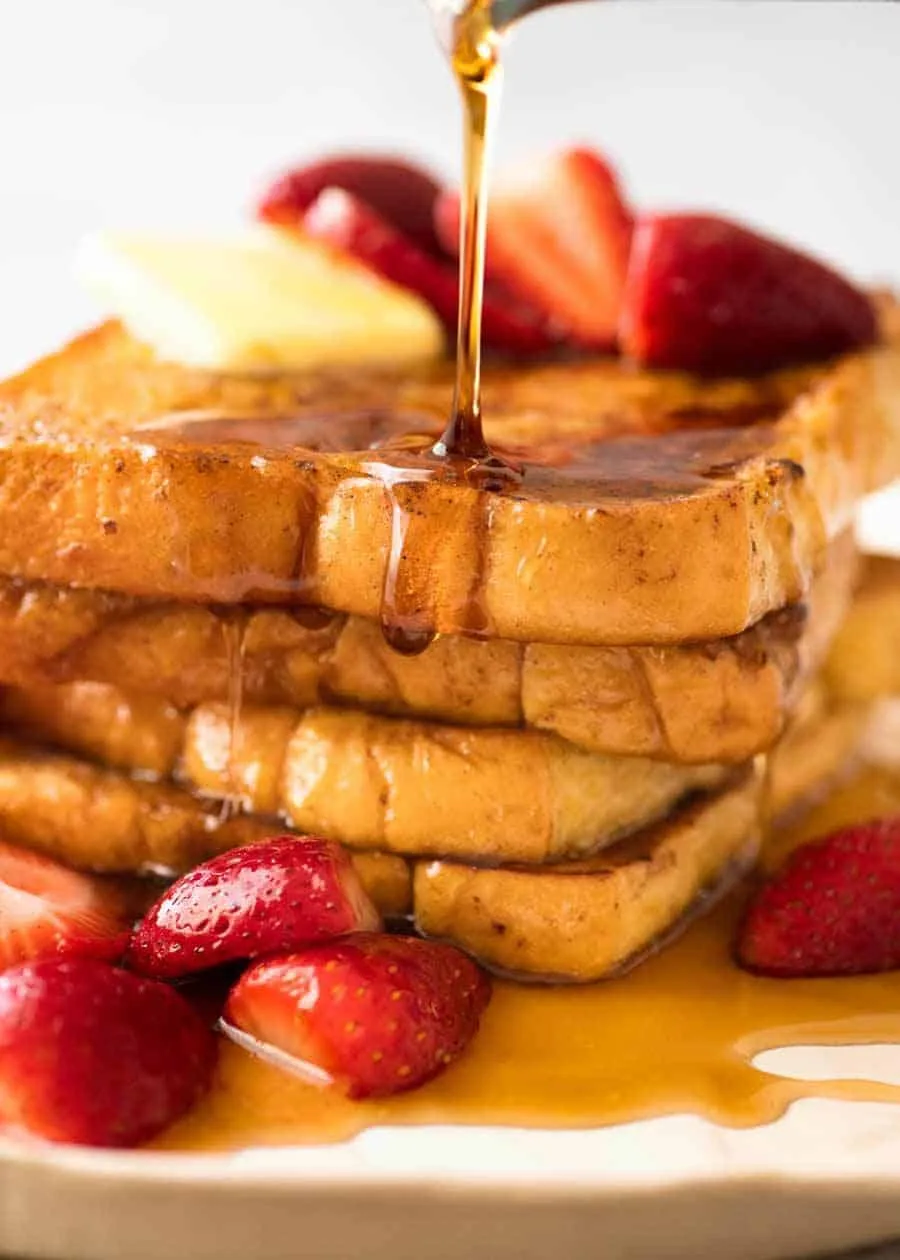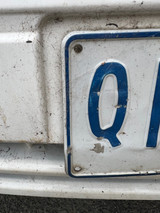French toast
- rosemary
- Feb 9
- 4 min read
Updated: 13 hours ago
"French toast tackles pancakes head on and smashes it." Claire Thomson

Yesterday's New York Times recipe offering - no picture - was French toast. Such a basic thing is it not? In his piece on Perfect quick and easy french toast Daniel Gritzer of the Serious Eats team, tells us that when he mentioned that he was writing it to his sister, she said "What's there to it? I just eyeball it when I make it at home." Nevertheless he gives it a really good laboratory examination on things such as ratio to milk and eggs, to arrive at the perfect Goldilocks version. Whihc just goes to prove that the simplest things can turn out to be not simple at all. Well they are but you can write at length about them. Maybe even write a book. I bet people have written books about French Toast.
Anyway, the article is worth reading for the ultimate guide, even better than Felicity Cloake's perfect version I think. The picture however, is of Bill Granger's French toast with fresh berry sauce as a homage to the man who, to my mind anyway, invented brunch and where there's brunch, all day breakfast, or just breakfast, in an Australian café you will find French toast.
French toast exists in savoury form as well as sweet, but I'm going to ignore that fact. It seems all wrong to me.

So basic is it, that the Romans were making it thousands of years ago. In that Roman cookbook De Re Culinaria by Apicius we find a recipe for Aliter Dulcia (Another sweet dish):
"Strip the crusts from wheaten loaves and break the loaves into large pieces. Soak them in milk and fry in olive oil. Pour honey over them and serve." Apicius, 7.13.3
Now some people claim that the eggs which now feature in French toast recipes were also included, but one website had the latin there as well and there seemed to be no eggs. With which Wikipedia concurs. Nevertheless the fundamental idea of soaking bread in milk, frying it and pouring over something sweet is there.

Back then, and throughout most of history, wheat bread, whether it was stale or not, was a prerogative of the rich. Today French toast - like the Serious Eats basic version shown here is classically made with stale sliced white bread - 'lost' bread - hence the French name of 'pain perdu'. Another English name for it is Poor Knights of Windsor, because:
"It was named for an order of knights established by Edward III for knights who had fallen on hard times after the 1346 Battle of Crecy in northern France. The reason the knights from this battle were poor after it was over was because they had to sell their estates to ransom themselves out of capture. The knights were given residence in Windsor Castle, and they worked for their housing by performing duties around the castle." A Taste of History with Joyce Wright
Mind you nobody seems to know why their name was given to the dish. It's almost ironic that the 'poor' bit now relates to sliced white bread, which, as I wrote the other day, is now associated with the poor. The rich don't eat sliced white bread - unless it's in the form of posh club sandwiches.
Throughout history and around the world there are numerous other versions of this simple dish, which was first written down in a recipe that included the eggs, in the French cookbook of the 1300s, written by Guillaume Taillevent, Le Viandier - as 'tostées dorées' ('golden toasts'). Maybe this is why it's called French toast - nobody seems to explain the 'French' bit.
Fundamentally you get some stale bread - fresh bread will go horribly soggy - soak it in a mix of eggs and milk - people argue about the proportions - fry - clarified butter seems to be the favourite - butter burns and oil is not as tasty? - and add some sugar - they vary about when. After that of course, you can add whatever you like, or nothing at all. I think we used to have it as children as a treat every now and then just as it came from the frying pan.
But, of course, I couldn't resist and found some fancy ones: Nagi Maehashi does a pretty standard but clear version on her website Recipe Tin Eats and then there are three fancy ones from The Guardian - Torrijas - a tarted up Spanish version from Benjamina Ebuehi; Panettone baked french toast - Claire Ptak and Lamington french toast bites - Liam Charles.

Then there's Ottolenghi. Of course there is. He offers two, both of which various admirers have had a go at. The first is Super french toast of which the writer of the WTF Do I Eat Tonight? website says:
"I want you to see every stage, to know how marvellously straightforward, yet just plain marvellous this is. It is a treat to end all treats and though I could go on, you really just have to try it."

And then there's the Nopi restaurant version
French toast with orange yoghurt - about which Ottolenghi himself (or one of his minions) wrote on his Facebook site:
"A NOPI breakfast favourite: French toast, star anise sugar, berry compote, orange yoghurt."
We don't eat things like this in our house - pancakes and suchlike. Breakfast is a very simple affair of coffee, plus something with jam - which reminds me I must stop writing this and go and make some jam from Monika's plums before they decay into mush. But perhaps I should treat us sometimes. After all it could be dessert at the weekend as well. Who says it has to be breakfast?
Q - difficult of course, so here are my three sort of Q photos. I did take picture of a quince but it didn't come out - quarters - a bit of a stretch, but it's in four pieces; Q on a number plate; quartz - yes I know it's not quartz but this car light reminded me of quartz.
YEARS GONE BY
February 9
2024 - Nothing
2022 - Nothing
2019 - Nothing
2017 - Health food?
















Yum